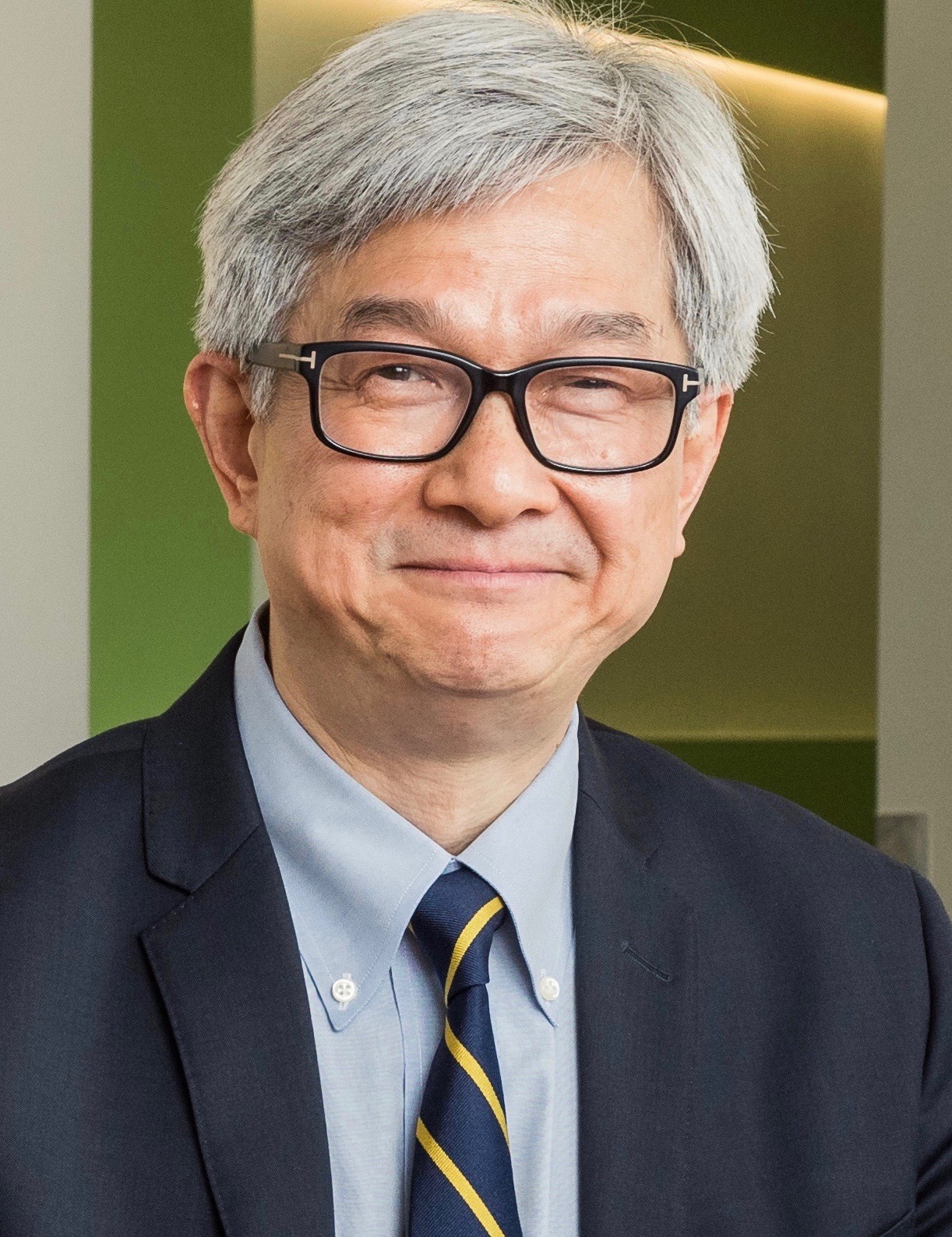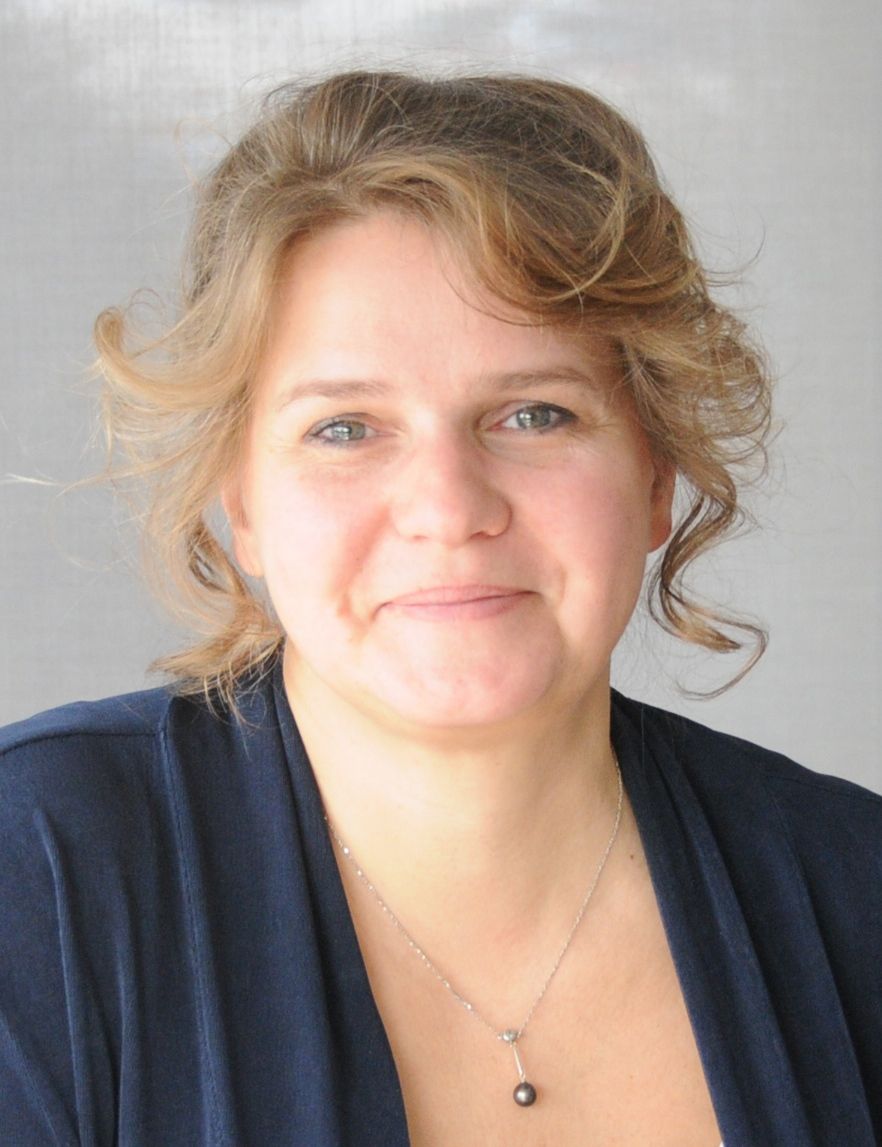Other Track AgendasCirculating Biomarkers: Cell-Free Nucleic Acids, Proteins and Rare Circulating Cells | Exosomes and Extracellular Vesicles (EV): Research, Diagnostics and Therapeutics Opportunities |

Monday, 20 March 201708:00 | Conference Registration, Conference Materials Pick-Up, Morning Coffee and Breakfast Pastries | |
Session Title: Conference Plenary Session -- Current Status and Emerging Themes in Circulating Biomarkers, circa 2017 |
| | |
Plenary Session Chairman: Professor Dominique PV de Kleijn, University Medical Center Utrecht |
| | 09:00 |  | Keynote Presentation Blood-based Testing for Somatic Alterations in Non-Small Cell Lung Cancer
Walter Koch, Vice President, Roche Molecular Systems, United States of America
For cancer patients with inaccessible or unavailable tumor tissue biopsies, an unmet Medical need exists for a surrogate for tissue testing. New ultra-sensitive PCR and NGS technologies allow analysis of tumor derived nucleic acids and cells in blood with potential applications to therapy selection for targeted therapeutics, assessment of initial therapy response, monitoring for disease progression during treatment, and identification of drug resistance mechanisms that can suggest further treatment options. This presentation will cover clinical development of a FDA approved assay detecting EGFR mutations in plasma from NSCLC patients to highlight what is possible, what has been achieved, and what challenges remain before Liquid Biopsy applications find routine clinical use. |
| 09:30 |  | Keynote Presentation Exosomes and Their Potential as Therapeutics
Jan Lötvall, Professor Krefting Research Centre, University of Gothenburg, Chief Scientist, Codiak BioSciences; Founding President of ISEV, United States of America
This presentation will discuss the mechanisms by which exosomes can exert their effects in recipient cells, discussing their RNA and protein cargo. Further, the talk will discuss the overall vesicular secretome, including subgroups of extracellular vesicles, such as microvesicles, exosomes, and subpopulations within each group. Lastly, the talk will discuss opportunities of high jacking the exosome cell-to-cell communication pathways to develop the next generation of biologicals with the aim to cure complicated diseases. |
| 10:00 |  | Keynote Presentation Diagnosis of Ischemic Heart Disease Using Plasma Extracellular Vesicles
Dominique PV de Kleijn, Professor Experimental Vascular Surgery, Professor Netherlands Heart Institute, University Medical Center Utrecht, The Netherlands, Netherlands
Cardiovascular Disease (CVD) is with the cardiovascular events of Ischemic Heart Disease and Stroke, the number 1 and 2 cause of death in the world and expect to increase especially in Asia. Ischemic heart disease (IHD) comprises 3 entities: stable coronary artery disease (SCAD), unstable angina (UA) and myocardial infarction (MI). Because IHD is associated with an increased risk of adverse clinical events such as heart failure and death, early recognition of IHD is of utmost importance. However, to diagnosis IHD is challenging, as many patients present with atypical symptoms. It is known that women have a different symptom sensation than men. Troponins are the main diagnostic tool for detection of MI. Blood biomarkers for SCAD (typically causing stable angina) and UA, however, are not available. These diagnoses frequently require hospital visits/admissions for time-consuming and costly (non)invasive tests. We show that the plasma extracellular vesicle content can be used as an accurate source for early diagnosis of SCAD and UA. |
| 10:30 | Coffee Break and Networking | 11:15 |  | Keynote Presentation New Tools for Liquid Biopsies: Microfluidic Platforms for the Efficient Isolation and Molecular Profiling of Circulating Tumor Cells (CTCs), Cell Free DNA (cfDNA) and Nanovesicles (Exosomes)
Steve Soper, Foundation Distinguished Professor, Director, Center of BioModular Multi-Scale System for Precision Medicine, The University of Kansas, United States of America
Liquid biopsies are generating great interest within the biomedical
community due to the simplicity for securing important biomarkers to
manage complex diseases, such as many of the cancer-related diseases.
These circulating markers consist of CTCs, cfDNA and exosomes. We are
developing a suite of microfluidic devices that are can process whole
blood directly and engineered to efficiently search for a variety of
disease-associated liquid biopsy markers from divergent subpopulations
comprising the tumor microenvironment that can supply complementary
clinical information. Each microfluidic device can isolate the target
with recovery >90% and sufficient purity (>80%) to enable
downstream molecular analysis of the particular biomarker. The
microfluidic devices are made from thermoplastics via injection molding
to allow for mass-production of devices with tight compliancy to
accommodate clinical implementation. In this presentation, information
will be shared on the operational parameters of these devices for the
selection of liquid biopsy markers, and the downstream molecular
information that can be garnered from the isolated markers in diseases
such as colorectal, ovarian, breast, pancreatic and prostate cancers as
well as some of the liquid-based cancers (acute myeloid leukemia). |
| 11:45 |  | Keynote Presentation Saliva Liquid Biopsy (sLB)
David Wong, Felix and Mildred Yip Endowed Chair in Dentistry; Director for UCLA Center for Oral/Head & Neck Oncology Research, University of California-Los Angeles, United States of America
Liquid biopsy is a rapidly emerging field to address this unmet clinical need as diagnostics based on cell-free circulating tumor DNA (ctDNA) can be a surrogate for the entire tumor genome. The use of ctDNA via liquid biopsy will facilitate analysis of tumor genomics that is urgently needed for molecular targeted therapy. Currently, most targeted approaches are based on PCR and/or next generation sequencing (NGS) for liquid biopsy applications with performance concordance in the 70-80% range with biopsy-based genotyping. “Electric Field Induced Release and Measurement (EFIRM)” is an emerging liquid biopsy technology that provides the most accurate detection that can assist clinical treatment decisions for the most common subtype of lung cancer, non-small cell lung cancer (NSCLC), with tyrosine kinase inhibitors (TKI) that can extend the disease progress free survival period of these patients. EFIRM can detection ctDNA at single copy level whereas ddPCR detects ctDNA a minimum of 10 copy number. In addition EFIRM requires only 40 µl of sample volume, no sample processing, reaction time is 15min and can be performed at the point-of-care or high throughput reference lab using plasma or saliva. In two blinded independent clinical studies, EFIRM detects actionable EGFR mutations in NSCLC patients with >95% concordance with biopsy-based genotyping. EFIRM is minimally/ non-invasive detecting the most common EGFR gene mutations that are treatable with TKI such as Gefitinib or Erlotinib to effectively extend the progression free survival of lung cancer patients. |
| 12:15 |  | Keynote Presentation EVs Add New Dimensions to Cancer Clinic
Xandra Breakefield, Professor, Mass General Hospital (MGH)/Harvard Medical School, United States of America
Critical issues in cancer treatment are early detection, personalized data on gene drivers, and new therapies. In the case of both brain tumors, which are not easily accessible, and peripheral tumors, which may metastasize all over the body, we need to obtain clinically critical information from collective biofluids. Extracellular vesicles (EVs) have become a clinically relevant resource of biomarker information by providing a means to sensitively detect mutant proteins, DNA and RNA in biofluids, including blood, cerebral spinal fluid (CSF) and urine samples. Assays and devices to glean this information are emerging as products for clinical analyses. Waiting in the wings, and about to erupt, is the potential to use EVs as therapeutic delivery vehicles which can be derived from the patients’ own cells and target tumors throughout the body. |
| 12:45 | Networking Lunch in the Exhibit Hall: Visit Exhibitors and Poster Viewing | 13:30 |  Technology Spotlight: Technology Spotlight:
Luncheon Technology Spotlight: Enabling Biofluid Biomarker Discovery
Shannon Pendergrast, Chief Scientific Officer, Ymir Genomics
Ymir Genomics is developing a variety of methods and devices that facilitate Biomarker Discovery from Biofluids such as blood, urine, and saliva.
| |
Session Title: Extracellular Vesicles (EVs) as Source of Circulating Biomarkers |
| | 14:00 | .png) | Keynote Presentation Extracellular Vesicles and Their microRNA Cargo Serve as Biomarkers and Communicators in Liquid Biopsies
Gyongyi Szabo, Professor & Vice Chair for Research, Department of Medicine, University of Massachusetts Medical School, United States of America
Liquid biopsies such as serum or plasma are of great interest in the diagnosis and prognostication of liver diseases with the aim to replace the current “gold standard” of invasive liver biopsy. Liquid biopsy samples are enriched in Extracellular vesicles (EVs) that contain nucleic acids including microRAs as well as proteins. EVs produced in the liver by most cell types including hepatocytes and Kupffer cells, the liver resident macrophages are found in the circulation. We have previously reported that different types of liver injury (alcoholic, drug-induced or inflammation-related) result in increased levels of circulating EVs and these EVs are enriched in miR-122 indicating hepatocyte injury or miR-155 indicating liver inflammation. miR-122 is abundant in hepatocytes and circulating miR-122 was found in liver injury. We hypothesized that microRNA cargo of Extracellular Vesicle (EV) can serve as both biomarkers and organelles of communication between hepatocytes and immune cells in alcoholic hepatitis. EVs isolated from sera of chronic alcohol-fed (5 weeks Lieber DeCarli diet) or pair-fed mice and patients with alcoholic hepatitis, were characterized by western blot, nanoparticle tracking analysis system and miRNA analysis. The number of circulating EVs was significantly increased in alcohol-fed mice compared to controls. Exosomes represented most of the EVs (~80%). MicroRNA array of EVs revealed a significant increase of 7 inflammatory miRs (miR-192, 122, 30a, 744, 1246, 30b and miR-130a) in alcohol-fed mice compared to controls and of those miR-192, 122, and 30a showed excellent diagnostic value by ROC analyses. In patients with acute alcoholic hepatitis, we found a significant increase in the number of circulating EVs compared to controls with an increase in miR-192 and miR-30a in their cargo. Serum miR-122 was increased after alcohol binge drinking. In vitro, exosomes derived from ethanol-treated human hepatocytes were taken up by monocytes and transferred mature miR-122 into monocytes. This horizontally transferred miR-122 inhibited hemeoxygenase-1 expression, a target of miR-122 and sensitized monocytes to LPS stimulation to increase production of pro-inflammatory cytokines, TNF-a and IL-1ß; these effects were inhibited by exosome-mediated delivery of a miR-122 inhibitor in monocytes. Our results indicate that levels of EVs and their micoRNA signature can serve as biomarkers of alcoholic hepatitis. We discovered a novel EV-mediated mechanism of alcohol-induced communication between hepatocytes and monocytes by transferring hepatocyte-derived miR-122 that reprograms monocytes promoting inflammation in alcoholic hepatitis. These studies suggest that investigations of liquid biopsies have a great potential both in biomarker discovery and better understanding of disease mechanisms. |
| 14:30 | CSF Exosome Biomarkers of Inflammation, Oxidative Stress, and Neuronal Injury in Aging and HIV
Dana Gabuzda, Professor of Neurology, Dana-Farber Cancer Institute and Harvard Medical School, United States of America
This presentation will focus on analysis of human cerebrospinal fluid exosome proteins in aging and HIV, and identification of exosome biomarkers correlating with immune activation, oxidative stress, and neuronal injury. | 15:00 |  | Keynote Presentation Exosomes as Therapeutic RNA Delivery Vehicles
Anastasia Khvorova, Professor, RNA Therapeutics Institute, University of Massachusetts Medical School, United States of America
Exosomes have the potential to act as “native" ONT delivery vehicles, but robust and scalable methods for loading therapeutic RNA cargo into exosomes are lacking. We show that hydrophobically modified siRNAs (hsiRNAs) efficiently load into exosomes upon co-incubation, without altering vesicle size, distribution, or integrity, and promote efficient neuronal internalization and Huntingtin mRNA silencing both in vitro and in vivo. |
| 15:30 |  Technology Spotlight: Technology Spotlight:
Analysis and Insight from Liquid Biopsy Biomarkers
Isaac Houston, Life Science Specialist, QIAGEN
QIAGEN provides a broad range of tools for sample preparation and assay technologies for biomarker isolation, discovery, and verification. The presentation will provide researchers with effective and efficient workflow tools to overcome challenges in cancer and non-invasive genetic research. Join QIAGEN to learn how these powerful tools have enabled our customers to achieve valuable insights from various liquid biopsy biomarkers.
| 16:00 | Coffee Break | |
Session Title: Microfluidics Deployment for Studying Circulating Biomarkers |
| | 16:30 |  | Keynote Presentation Microfluidic Enrichment for Single Cancer Cell Analysis
Chwee Teck Lim, NUS Society Chair Professor, Department of Biomedical Engineering, Institute for Health Innovation & Technology (iHealthtech), Mechanobiology Institute, National University of Singapore, Singapore
Tumor heterogeneity is currently a major hindrance to cancer diagnosis and treatment. Here, microfluidic technology is used to enrich and enable probing of the molecular heterogeneity of single circulating tumor cells so as to obtain patient derived information for the personalized treatment of cancer patients.
Tumor heterogeneity is a general trait of cancer which has proven to be a major hindrance in cancer classification, diagnosis and treatment. Cancer can be classified loosely into a few distinct sub-types, but recent technological advances have begun to reveal the true extent of its heterogeneity. Single cell analysis is emerging as an important approach to detect variations in morphology or genetic, proteomic and molecular expression. Here, we will present several novel microfluidic technologies to probe the heterogeneity of cancer patient derived circulating tumor cells (CTCs). These include detecting the proteolytic capability of each CTC to obtain hint of their invasiveness as well as identify unique actionable key driver mutations with aim of improving anticancer therapy. It is hope that this single cell analysis approach will not only lead to more precised treatment of cancer patients from the individually derived information of these tumor cells, but will also aid in the development of better drugs to combat this disease. |
| 17:00 |  | Keynote Presentation Closed Microfluidic PCR-based Surface Plasmon Resonance Biosensor for Multiple Detection of Circulating Tumor DNAs
Sehyun Shin, Professor & Director, Nano-Biofluignostic Engineering Research Center, Korea University and Anam/Guro Hospital of Korea University, Korea South
Circulating tumor DNA (ctDNA) has been demonstrated as the most promising biomarker for non-invasive assessment of cancer as well as the most accurate predictor of cancer treatment responses. However, there are several hundreds of tumor DNAs even for one organ cancer (i.e., Lung cancer) and thus multiplexing is highly required for cancer detection from blood. The conventional techniques have been faced critical limits including multiplexing and cost and thus innovative technologies are highly required. Here, we present a highly precise and selective assay for detecting epidermal growth factor receptor (EGFR) mutations in plasma (or liquid biopsy) using DNA-DNA hybridization and Au nanoparticle probe with a lab-made surface plasmon resonance (SPR) sensometry. Targeted DNAs are amplified in a closed-loop microfluidic PCR module consisting of three different temperature regions. We prepared wild type EGFR, EGFR mutants including point mutation and deletion. Linker DNAs coated on a sensor surface of SPR captured different DNA types. Due to characteristics of SPRi, the whole assay process was monitored in real-time and completed within an hour. This study as a proof of concept can be further expanded into high degree of multiplexing detection of major and known ctDNAs, which could provide a solution for clinical unmet needs in cancer treatment and early detection. |
| 17:30 |  | Keynote Presentation Microfluidics for the Interrogation of Circulating Biomarkers in Glioblastoma Patients
Shannon Stott, Assistant Professor, Massachusetts General Hospital & Harvard Medical School, United States of America
Clinically, there is a dire need to diagnose and monitor brain tumor
recurrence and to detect mutations in real time to guide patient
treatment. A blood-based ‘liquid biopsy’ that captures and analyzes both
circulating tumor cells (CTCs) and extracellular vesicles (EVs) would
be an ideal approach to better predict tumor response in glioblastoma
patients without the need for highly invasive brain surgery. Through
these blood-on-a-chip assays, we aim to gain a better understanding of
when these important tumor derived CTCs and extracellular vesicles are
released and how we can exploit their molecular content to better guide
patient treatment. Working in partnership with Dr. Brian Nahed at MGH,
we have used our microfluidic technologies to isolate CTCs and EVs from
the blood of patients with advanced glioblastoma multiforme. In this
talk, data will be presented on our technological approach as well as
our effort to interrogate their molecular content using next generation
RNA sequencing. Through the microfluidic isolation of blood based
biomarkers from patients, our goal is to obtain complementary data to
the current standard of care to help better guide treatment. |
| 18:00 | Networking Reception with Beer, Wine and Appetizers. Engage with Fellow Delegates and Enjoy Views of the Charles River and the Boston Skyline | 19:30 | Close of Day 1 of the Conference | 19:45 | Dinner Short Course on Microfluidics for Studying Circulating Biomarkers [Separate Registration Required] |
Tuesday, 21 March 201707:00 | Morning Coffee, Breakfast Pastries and Networking in the Exhibit Hall | |
Session Title: Exosomes/Extracellular Vesicles (EVs): Engineering and Therapeutics/Delivery Opportunities |
| | 07:30 | Mesenchymal Stem Cell Exosomes: Powerful Agents of Lung Growth and Repair
Stella Kourembanas, Chief, Division of Newborn Medicine, Boston Children’s Hospital; Clement A. Smith Professor of Pediatrics, Harvard Medical School, United States of America
Bronchopulmonary dysplasia (BPD) is the most common complication of prematurity characterized by an arrest of lung growth with reduced alveoli, fewer blood vessels, and abnormal lung function. BPD has significant long-term pulmonary morbidities, including pulmonary hypertension (PH), airway hyperreactivity, abnormal pulmonary function test results, and, in some cases, emphysematous changes that persist into adulthood. Mesenchymal stem cells (MSCs) are recognized as potential cell-based therapy for diseases of the lung. These multipotent cells exhibit beneficial effects through anti-inflammatory, immuno-modulatory, pro-survival and anti-fibrotic mechanisms that are not clearly defined. We showed that bone marrow-derived MSCs or their cell-free conditioned media (CM) prevent and reverse experimental lung injury in the neonatal mouse model of BPD. We isolated exosomes from human MSC-CM and showed that they can prevent lung inflammation and PH in experimental models. Exosomes are small vesicular structures produced by all cells that contain a distinct cargo which not only represents the cell of origin but is differentially-enriched in specific nucleic acid or lipid/protein species. They serve as an important cell-to-cell communication mechanism. We have shown that MSC exosomes restore lung homeostasis through immuno-modulatory pathways, and enable lung-specific progenitor cells to repair lung injury. Current work is focusing on the full characterization of MSC exosomes and their biological function in lung injury, growth, and repair using experimental models of broncho-pulmonary dysplasia. Our goal is to develop the most optimal, well-characterized, and functional MSC exosome preparation for human application. | 08:00 | Development of Therapeutic Approaches Using Extracellular Vesicles to Treat Age-Related Diseases
Paul Robbins, Professor, Department of Biochemistry, Molecular Biology, and Biophysics, and the Institute on the Biology of Aging and Metabolism, University of Minnesota Medical School, United States of America
With aging, there is an inevitable and progressive loss of the ability of tissues to recover from stress, in part through loss of stem cell function. More than 90% of people over 65 years of age have at least one chronic disease, while 75% have at least two. Thus, it is imperative to find a way to target therapeutically the process of aging to compress the period of functional decline in old age. We have demonstrated that injection of adult stem cells isolated from young wild-type mice into a mouse model of accelerated aging conferred significant lifespan and healthspan extension through a paracrine/endocrine mechanism. Moreover, treatment of mice with EVs from young stem cells is able to extend health-span. Progress towards developing clinically relevant approaches using stem cell-derived extracellular vesicles to treat autoimmune and age-related pathologies will be presented. | 08:30 |  | Keynote Presentation Extracellular Vesicles and Therapy for Pulmonary Hypertension
Peter Quesenberry, Professor of Medicine, The Warren Alpert Medical School of Brown University, United States of America
Extracellular vesicles from mice with monocrotaline induced pulmonary hypertension can induce pulmonary hypertension in normal irradiated mice and the relevant cellular inducers are endothelial progenitors. Vesicles from mesenchymal stem cells can reverse the induced pulmonary hypertension and low dose irradiation to deplete endothelial progenitors also reverses pulmonary hypertension in these models. |
| 09:00 | Signaling Pathways Regulating Extracellular Vesicle RNA
Alain Charest, Associate Professor, Beth Israel Deaconess Medical Center, Cancer Research Institute, Department of Medicine, Harvard Medical School, United States of America
| 09:30 |  Technology Spotlight: Technology Spotlight:
Surface Charge and Fluorescence: Biochemical Analysis of Vesicles by Nanoparticle Tracking Analysis
David Palmlund, Sales Engineer, Particle Metrix, Inc.
Nanoparticle Tracking Analysis (NTA) combined with surface charge measurement and fluorescence detection capability enables the user to gain bio-chemical information about the particle surface. Biological particles such as virus, virus-like particles (VLPs), vesicles, liposomes and protein aggregates can be specified, quantified and differentiated from inorganic particles such as dust, bubbles or precipitates.
| 10:00 | Coffee Break and Networking | 10:30 | Exosome Engineering for Protein Delivery Via Optogenetic Approach
Chulhee Choi, Professor and Chair, BioMedical Imaging Center, Korea Advanced Institute of Science and Technology (KAIST), President, ILIAS Biologics Incorporated, Korea South
In this presentation, an opto-genetically engineered exosome system, named ‘exosomes for protein loading via optically reversible protein–protein interaction” (EXPLOR) that can deliver soluble proteins into the cytosol via controlled, reversible protein–protein interactions (PPI) will be introduced. By integrating a reversible PPI module controlled by blue light with the endogenous process of exosome biogenesis, cargo proteins can be loaded into newly generated exosomes. Treatment with protein-loaded EXPLORs was shown to significantly increase intracellular levels of cargo proteins and their function in recipient cells in both a time- and dose-dependent manner. Previously, it has been shown to delivery mCherry, Cre enzyme, Bax, and Super repressor I?B proteins as functional proteins in the target cells and in vivo. In this presentation, the results for follow-up studies will also be discussed. | 11:00 | Influence of Glioblastoma-derived Extracellular Vesicles on the Tumor Microenvironment
Marike Broekman, Neurosurgeon, Dept of Neurosurgery, Universitair Medisch Centrum Utrecht, Netherlands
Extracellular vesicles (EVs) have been shown play a role in glioblastoma biology. Here, we will present data on EV mediated modification of microglia, macrophages and T-cells in vivo. | 11:30 | Stressing Out the Neighbors: Stressed Exosomes (“SexOsomes”?) Passage Stress Phenotypes to Recipient Cells
Michael Graner, Professor, Dept of Neurosurgery, University of Colorado Anschutz School of Medicine, United States of America
Cancer cells undergo numerous stresses, many of them self-inflicted, but often do not appear to suffer the consequences of those stresses. In some cases, the stress responses are actually beneficial to the tumor cells, providing them with potent resilience to their less-than-hospitable environments. One consistent tumor stress is the Unfolded Protein Response (UPR), an endoplasmic reticulum-based stress-management system with sensors, transducers, and effectors that result in a transcriptional/translational landscape rearrangement leading to resolution of the stress, or cellular apoptosis. However, tumors may incorporate the UPR into their stress portfolio to survive or even thrive amidst their environmental insults. We propose that exosomes from stressed cells (stressed exosomes, or “sexosomes”) are able to induce stress response phenotypes in recipient, unstressed cells, thus enabling stress responses without having to experience the actual stress. Our analysis in this report goes to the molecular level, monitoring proteome changes in glioma cells when those cells are exposed to exosomes released from UPR-stressed cells. We find high overlap in the proteomes of stressed cells and unstressed cells that receive “sexosomes”, suggesting that tumors may unify their overall stress responses despite their inherent heterogeneity. The implications for general tumor biology, and in particular, therapeutic resistance, are highlighted. | 12:00 | Extracellular Vesicles and their Fellow Travelers in HIV Infection
Kenneth Witwer, Associate Professor, Johns Hopkins University School of Medicine, United States of America
Retroviruses such as HIV represent hijacked extracellular vesicles (EVs). As we and others have reported, altering the EV exposure of cells in culture has measurable effects on growth, survival, and behavior. We now find that under EV-depleted conditions, retrovirus-susceptible cell lines and primary cells produce more HIV. Baseline production is restored with add-back of EVs from ultracentrifuge pellets. Furthermore, we observed increased infectivity of both X4 and R5 tropic viruses produced under EVD versus EVR conditions. Gene expression, lipid production, and cellular microRNAs were probed as possible contributors to these phenomena, revealing minimal roles for microRNAs but potential involvement of lipid biogenesis pathways. However, standard EV depletion protocols may also deplete other constituents of serum, including lipoprotein particles, which associate with and may mimic EVs in some characterization assays. We submit that the possible functional partnerships of EVs and lipoproteins are a rich topic for further investigation. | 12:30 | Networking Lunch: Visit Exhibitors and Engage with Fellow Delegates | 13:00 |  Technology Spotlight: Technology Spotlight:
Luncheon Technology Spotlight: Next Generation Affinity-based Extracellular Vesicle Isolation Technologies that Rely on a Synthetic Peptide or Hyaluronic Acid
Anirban Ghosh, Research Scientist, Atlantic Cancer Research Institute (ACRI)
We have developed and validated two robust affinity-based EV-capture technologies that use (i) a synthetic peptide and (ii) hyaluronic acid for improved scalability, quality, platform versatility, cost-effectiveness, clinical compatibility and liquid biopsy assays (biomarker and mutation detection).
| 13:30 |  Technology Spotlight: Technology Spotlight:
Automated Proteomic Characterization of Single Exosomes
George Daaboul, Chief Scientific Officer, nanoView Biosciences, Inc.
Exosome research requires validation of prepared samples that has traditionally been performed using nanoparticle tracking analysis (NTA) combined with proteomic analysis for exosomal proteins. Recently, Flow Cytometry (FC) has been used to combine the sizing and proteomic information about samples under analysis. While a mature tool for large cellular-sized analyses, FC has limitations resulting from the small-size of exosomes, specifically in terms of the number of available surface epitopes and low-signal relative to background levels, especially in complex samples. nanoView Diagnostics has recently developed a label-free visible-light microarray imaging technique that allows multiplexed enumeration and sizing of individual nanovesicles captured on the sensor in a one-step assay direct-from-sample and can work with samples volumes as small as 5 µl. The exosome characterization technology is a high-throughput technique that can improve standardization of exosome preparations and facilitate translation of exosome based liquid biopsies.
| |
Session Title: Joint Session Exploring the Areas of Synergy Between the Various Circulating Biomarker Classes |
| | 14:00 |  | Keynote Presentation Advancing Liquid Biopsies using Exosomes
Johan Skog, Chief Scientific Officer, Exosome Diagnostics Inc, United States of America
The field of liquid biopsy has gained an enormous interest the last couple of years. Being able to detect tumor derived genetic profiles and track the evolution of tumor mutations over time has been a long sought after goal of personalized medicine. Utilizing cell free tumor DNA (ctDNA) for detection of mutations in plasma have shown some promise in late stage cancer patients. However, ctDNA analysis suffer from several shortcomings. The copy numbers of ctDNA carrying the mutations are often very low in plasma, limiting the sensitivity of the assay and can also not be used to monitor splice variants and other RNA specific aberrations that are clinically important. Our exosome platform addresses both of these issues. Exosomes are small vesicles that are abundantly shed from tumor cells, and carry RNA from the cell of origin. Mutations are abundantly detected on exosome RNA from plasma, and can also be efficiently used to profile splice variants and fusions. This presentation will cover some of the latest diagnostic applications of the exosome platform and how they compare to other liquid biopsy tests. |
| 14:30 |  | Keynote Presentation Clinical Potentials for Large Oncosome and Exosome Profiling in Prostate and Breast Cancer
Dolores Di Vizio, Professor, Cedars Sinai Medical Center, United States of America
Extracellular vesicles (EVs) are important mediators of intercellular mechanisms as they can shuttle from one cell to another a reservoir of functional molecules (bioactive proteins, nucleic acids and lipids). EVs are highly heterogeneous and differ by size, composition and function. As a common characteristic, they all are surrounded by a lipid bilayer and can act in the proximity of the cell or at distance. Given the abundance of cancer-derived molecules that can be found in each particle, EVs are being recognized as appealing biomarkers of diagnosis and prognosis. Because these molecules are functional, EV profiling has also the potential to identify therapeutic targets in the personalized medicine effort. Our team recently reported that highly metastatic cells undergoing mesenchymal to amoeboid transition export large (1-10 µm diameter) bioactive EVs (large oncosomes) that originate from the shedding of bulky membrane protrusions from the plasma membrane. We have demonstrated that the abundance of large oncosomes in the circulation and in tissues correlates with advanced disease in mouse models and human subjects, and that these vesicles are promising candidates for liquid biopsy approaches through large scale profiling of protein, DNA and mRNA. |
| 15:00 | Cell Communication and Therapeutic Delivery via ARMMs (ARRDC1-mediated Microvesicles)
Quan Lu, Associate Professor, Harvard School of Public Health, United States of America
My lab discovered a new type of extracellular vesicles known as ARMMs (ARRDC1-mediated microvesicles), which bud directly at the plasma membrane and are distinct from exosomes. I will discuss the molecular mechanism and physiological function of ARMMs. I will also present most recent data on how ARMMs may be harnessed for therapeutic delivery of bioactive protein and RNA molecules. | 15:30 | Companion Animal Studies Advance Understanding of Disease-Relevant Circulating Exosome specific miR Signatures
Andrew Hoffman, Professor, Director -- Regenerative Medicine Laboratory, Tufts University, United States of America
Companion animal disease models strongly resemble human diseases and biofluids from these animals are readily accessible sources of exosomes for longitudinal studies. We present an analysis of miRNomic data from circulating exosomes derived from dogs with naturally occurring heart diseases also found in humans (mitral valve disease, arrythmogenic right ventricular cardiomyopathy). Target mRNA and gene networks underpinning miR-target interactions were identified in silico for candidate miR. The process of functional, biological, and clinical characterization of circulating exosome specific miR in companion animals will be discussed. | 16:00 | Circadian Rhythm Modulates the Ability of Pulmonary-derived Extracellular Vesicles to Alter Target Marrow Cell Phenotype
Laura Goldberg, Assistant Professor of Medicine, Brown University/Rhode Island Hospital, United States of America
We are interested in how circadian rhythm influences extracellular vesicle (EV)-mediated inter-cellular communication. To begin exploring whether circadian oscillations alter EV function, we employed a well-established in vitro system in which lung-derived EVs, when co-cultured with murine bone marrow cells, induce the bone marrow cells to express pulmonary epithelial cell-specific mRNA and protein. Using this readily manipulated in vitro system, we were able to vary the circadian time-point of both the lung harvest for EVs and the bone marrow cell harvest for target marrow cells prior to co-culture. We found that 1) EVs, when harvested from lung at distinct circadian time-points, differentially altered the expression of pulmonary epithelial specific mRNAs in target bone marrow cells in culture, and 2) altering the circadian time-point of the target whole bone marrow cells, and co-culturing with lung-derived EVs similarly resulted in statistically significant differences in pulmonary epithelial mRNA expression due to circadian oscillations of the recipient marrow cells. These data indicate that circadian rhythm is likely an important component of EV-mediated inter-cellular communication. Our ongoing work is aimed at elucidating the mechanisms by which circadian rhythm influences EV-mediated communication with bone marrow cells. We hope such studies will provide insight into the molecular mechanisms by which EVs alter the mRNA expression profile of target WBM and help optimize EV manipulations for therapeutic interventions in the future. | 16:30 | Nano-Plasmonic Exosome (nPLEX) Analysis
Hyungsoon Im, Associate Professor, Center for Systems Biology, Mass General Hospital (MGH)/Harvard Medical School, United States of America
This presentation will review a recent progress of nPLEX (nano-plasmonic exosome) technology. The sensor is based on transmission surface plasmon resonance (SPR) through periodic nanohole arrays. Target-specific exosome binding to the array causes SPR signal changes, which enables sensitive and fast detection of exosomes. We applied the first generation nPLEX system to detect exosomes collected from ovarian cancer patients. | 17:00 | Microfluidic Isolation of Cancer Cells: Overcoming the Liquid Biopsy Status Quo
Silvina Ribeiro-Samy, Researcher, International Iberian Nanotechnology Laboratory (INL), Portugal
Development of a size-based rare cell capture device for point-of-care
liquid biopsy that shall maximize the clinical value of circulating
biomarkers. | 17:30 | Role of Extracellular Vesicles in Fetal Lung Morphogenesis Mediated by Mechanical Signals
Juan Sanchez-Esteban, Associate Professor of Pediatrics, Staff Neonatologist, Women & Infants Hospital of Rhode Island, Brown University, United States of America
Incomplete development of the lung secondary to extreme prematurity or pulmonary hypoplasia can cause neonatal death and serious long-term morbidities. Currently, the management of these conditions is primarily supportive. Lung morphogenesis has significant dependence on mechanical signals. However, the mechanisms by which mechanical forces accelerate lung development are not fully-characterized. Extracellular vesicles (EVs), including exosomes and microvesicles, are increasingly recognized as a novel mode of cell-to-cell communication. Shedding vesicles are released from many cell types and have been identified in a variety of body fluids. Moreover, EVs were found to be important for tissue morphogenesis in drosophila. However, the role of EVs in fetal lung development is unexplored. Our preliminary studies show the presence of EVs in the lumen of the fetal lung. In addition, physiologic levels of mechanical strain stimulate the release of EVs in fetal lung epithelial cells. Moreover, incubation of fetal epithelial cells with EVs mimics the effect of stretch on cell differentiation. These preliminary studies suggest that signaling mediated by EVs could be important for fetal lung development. Currently, we are investigating the role of EVs in fetal lung development using ex vivo and in vivo models. | 18:00 | Inter- and Intra-Tumoral microRNA Heterogeneity
Agnieszka Bronisz, Instructor in Neurosurgery, Brigham and Women's Hospital/Harvard Medical School, United States of America
Despite the importance of molecular subtype classification of
glioblastoma multiforme (GBM), the extent of extracellular vesicle
(EV)-driven molecular and phenotypic re-programming remains poorly
understood. To reveal complex subpopulation dynamics within the
heterogeneous intra-tumoral ecosystem, we characterized microRNA
expression and secretion in phenotypically diverse subpopulations of
patient-derived GBM stem-like cells (GSC). As EVs and microRNAs convey
information that drives phenotype and re-arrange the molecular landscape
in a cell type-specific manner, we argue that intra-tumoral exchange of
microRNA augments the heterogeneity of GSC that is reflected in highly
heterogeneous profiles of microRNA expression in GBM subtypes. | 18:30 | Terminal Complement Components are Critical in the Release of Cellular RNA in Circulation
Ionita Ghiran, Assistant Professor of Medicine, Beth Israel Deaconess Medical Center, United States of America
Despite of over 10 years of intense research, the intimate mechanisms responsible for extracellular vesicles (EVs) formation (exosomes and microvesicles), and the release of cellular RNA species (exRNAs) in circulation are currently known. The complement system is comprised of over 20 soluble and membrane bound proteins with critical roles in recognizing, binding, and removal of foreign particles as well as initiating and regulating innate and acquired immune responses. Activation of the complement system occurs during both, normal (circadian variation), and pathological conditions through either classical, alternative, or lectine pathways leading to the formation and transient insertion of C5b-9/Mac pore complex into cellular plasma membrane. We hypothesis that a) MAC-insertion promotes a sudden, significant and transient water and Ca++ influx, leading to: i) endocytosis of the affected area, followed by delivery of C5b-9/MAC-containing plasma membrane into the multi vesicular body (MVB), and its incorporation into exosomes, or ii) exocytosis of the C9 channle/MAC-affected plasma membrane patch followed by microvesicles (MVs) formation. In addition, the size of the MAC/C5b-9 pore, 12 nm, is large enough to: i) allow cytoplasmic RNA species to be transferred into the MVB following endocytosis of C5b-9/MAC-containing plasma membrane, and ii) RNA species located near the plasma membrane to be released in the extracellular space upon C5b-9/MAC insertion. Our results, for the first time implicate MAC/C5b-9 as: i) a possible channel responsible for exosomes and microparticle biogenesis, and ii) loading of cytosolic RNAs into the exosomes, and iii) the direct release of cytoplasmic RNA species into the circulation (exRNAs). | 19:00 | Close of Day 2 of the Conference |
|

 Add to Calendar ▼2017-03-20 00:00:002017-03-21 00:00:00Europe/LondonExosomes and Extracellular Vesicles (EV): Research, Diagnostics and Therapeutics OpportunitiesSELECTBIOenquiries@selectbiosciences.com
Add to Calendar ▼2017-03-20 00:00:002017-03-21 00:00:00Europe/LondonExosomes and Extracellular Vesicles (EV): Research, Diagnostics and Therapeutics OpportunitiesSELECTBIOenquiries@selectbiosciences.com